It’s a festival, it’s a breakfast dish, it’s an infinitely better version of Khichdi. It’s Pongal!
It might seem odd to start your day off with a seemingly heavy rice-based dish, but that’s how it’s best enjoyed in South Indian households across the world. Rice for breakfast is the standard in South India, Idlis, Dosas and Aapams are all made with rice. Pongal is so embarrassingly easy to make that I honestly don’t know why I’ve ever reached for a packet of Maggi on mornings when I’ve been too lazy to cook.

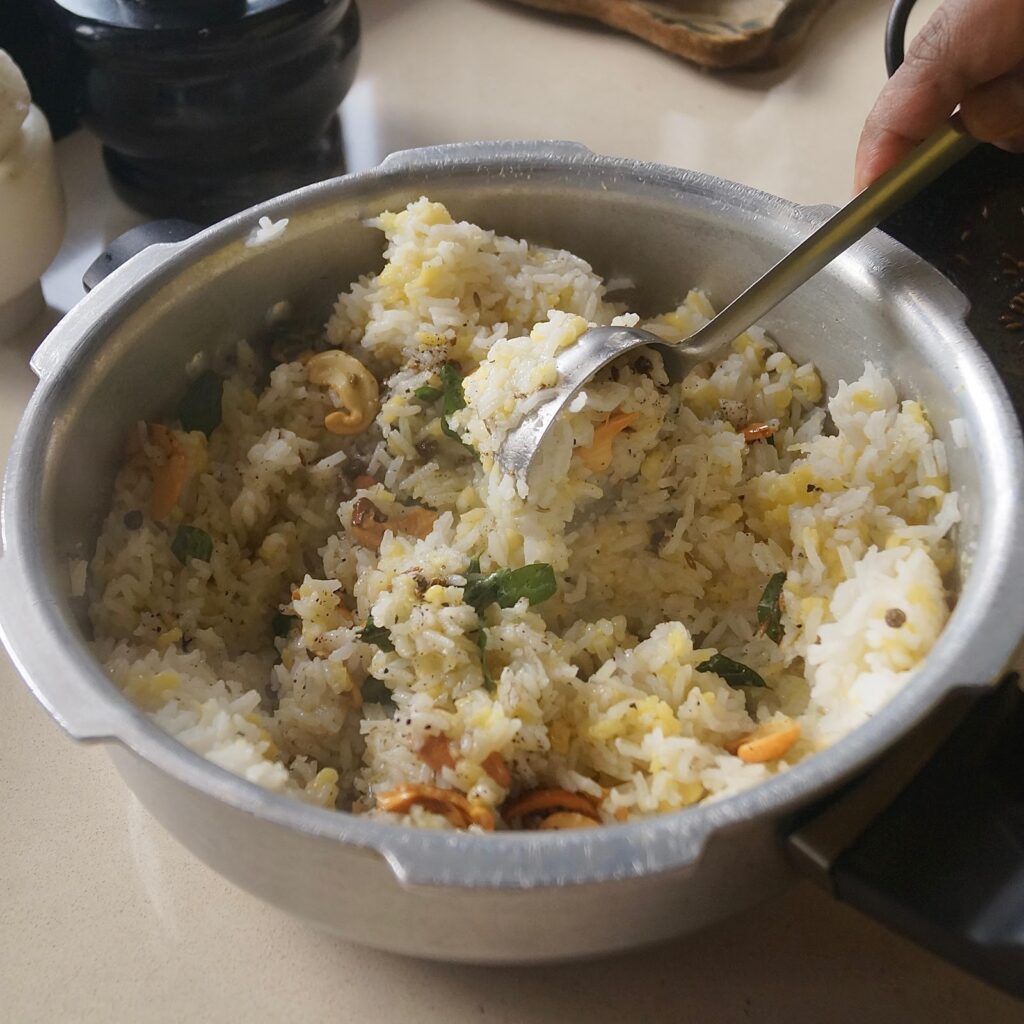
To Pressure Cook or Not to Pressure Cook?
Always pressure cook if possible. Pongal is incredibly fast and easy with a pressure cooker. Add your rice and dal to a pressure cooker and it’s ready by the time you gather and prepare the rest of the ingredients. The Wonderchef Easy Lock Pressure Cooker has an induction base and is the most used pressure cooker in my house! Larger quantities look great in pictures but I think the smaller recipe will be more useful! The 3 litre pressure cooker is perfect for this recipe and it cuts the cooking time down in half. If you’re cooking for a larger bunch, the Easy Lock Pressure Cooker also comes in a 5 Litre version! These cookers have a universal locking system which means no more fidgeting trying to secure it into place! There’s also a glass lid that comes with this cooker that you can swap out while cooking recipes that don’t require pressure cooking.
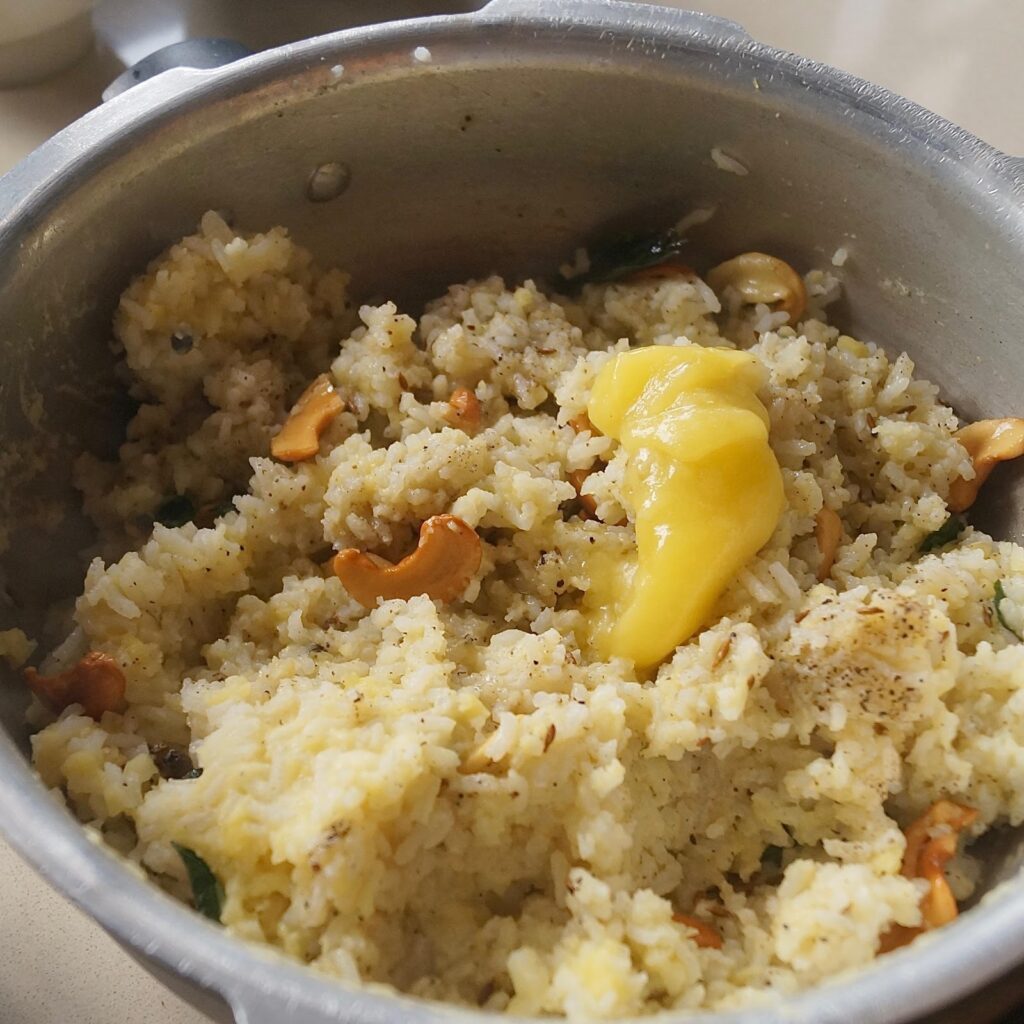
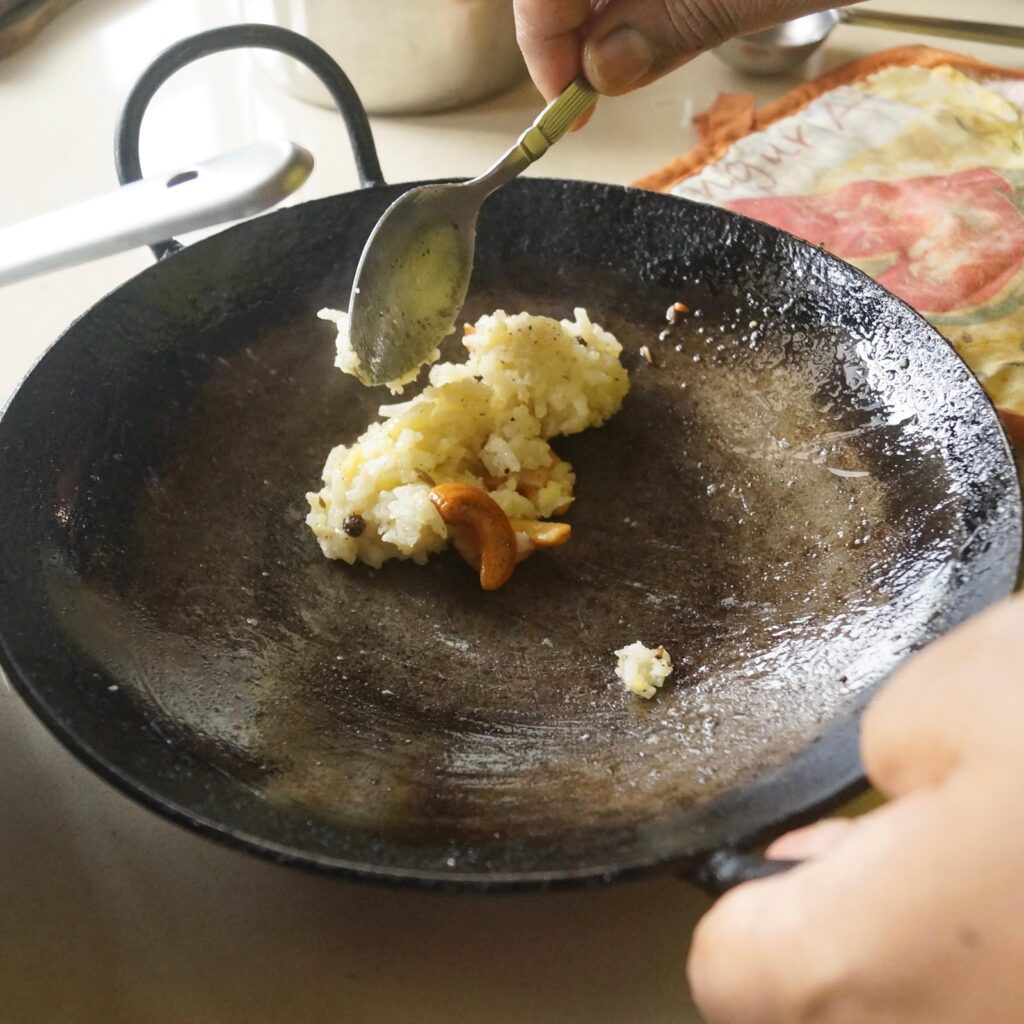
Get every last drop of ghee!
The Ghee
The key to a great Pongal is the quality (and let’s be honest, quantity) of ghee you add to it. Pick a good brand of ghee because the flavour really comes through. As several of the pictures will tell you, this isn’t exactly low-calorie, you could definitely cut down on the ghee but I’d suggest making Pongal on an indulgent day, you won’t regret it!
Accompaniments
Chutney and sambhar. Nothing more and nothing less. The ‘correct’ way to enjoy Pongal, according to several members of my family is to mix all three together till the separate components are unrecognisable. Personally? I enjoy eating Pongal in the ‘wrong’ way, i.e. on its own – a fact that irritates my family every single time. Help us settle this debate won’t you?
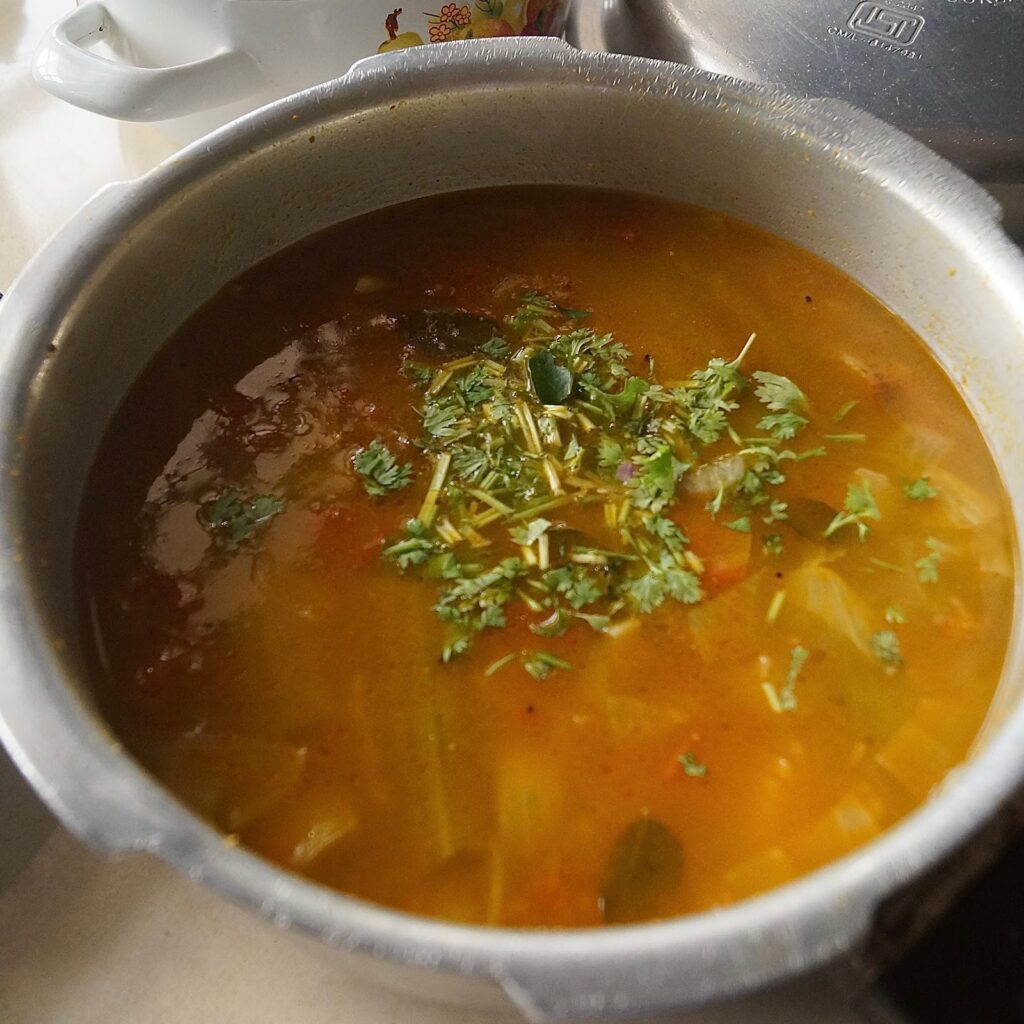
The chutney we make is a standard chutney, but the sambhar that goes along with the pongal is a ‘tiffin sambhar’ – sambhar lite, a quick and easy version that uses store-bought sambhar powder. Compared to the sambhar that’s made for lunch, this one is lighter, both in taste and the amount of dal that goes into it.
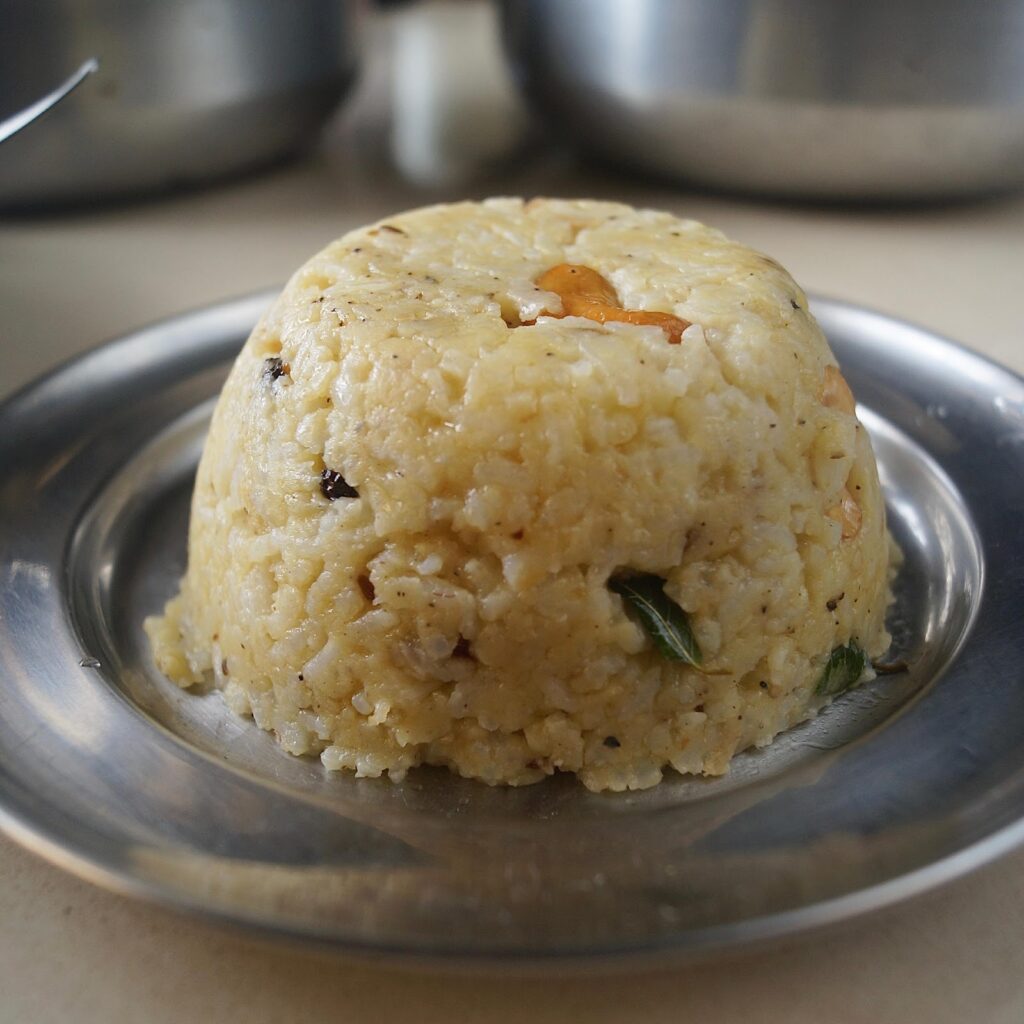
Cooking Time: 25 min
Serves 2
Ingredients
- 1/2 cup Raw Rice (Basmati, White, Indrayani, Biriyani Rice are all okay)
- 1/4 cup Moong Dal
- 2 1/4 cup Water*
- 1 to 1&1/2 tsp Salt
- 1/4 tsp Asafoetida
- 1 inch piece or 1 tsp finely chopped ginger
- 3 Tbsp Ghee
- 7-10 Cashews
- 1 1/2 Tbsp Whole Black Peppercorns
- 1 tsp Cumin Seeds
- 2 Sprigs Curry Leaves
- 1/2 tsp Black Pepper Powder

Instructions
- Wash your rice and dal thoroughly and add to a 2 litre pressure cooker.
- Since the rice and dal make up 3/4th of a cup, take 3 times that amount of water (2 & 1/4 cup) and add to the pressure.
- Finely chop your ginger and add to the pressure cooker along with the salt and asafoetida.
- Close the cooker, add the weight and set on high heat until the first whistle, about 5 minutes.
- Turn the heat down to low after the first whistle and cook for 4-5 minutes.
- Take the cooker off the heat and set aside for the pressure to release naturally.
- In the mean time heat the ghee in a small kadhai.
- Halve the cashews and add to the hot ghee.
- Crush the whole black peppercorns in a mortar. It doesn’t need to be perfect, I like to leave a few whole.
- Add the crushed peppercorns to the ghee and sauté.
- Add the cumin and sauté for 30 seconds.
- Once the cashews are brown, turn the heat off and add the curry leaves and black pepper powder.
- Add your tadka directly to the cooked rice and dal in the pressure cooker and mix very well.
- Fill up a small bowl with the pongal and up-turn onto a plate for that signature pongal look!
- Enjoy!
Notes:
The amount of water might vary based on the type of rice you’ve chosen. Not to worry, a measurement of 1:3 (Dal+Rice:Water) should work in most cases. Make it once and you’ll know if you have to add or remove some water!
About the blogger
Sneha Sundar is the creator of You Dim Sum, You Lose Some; a philosophy she adopts both in and out of the kitchen!





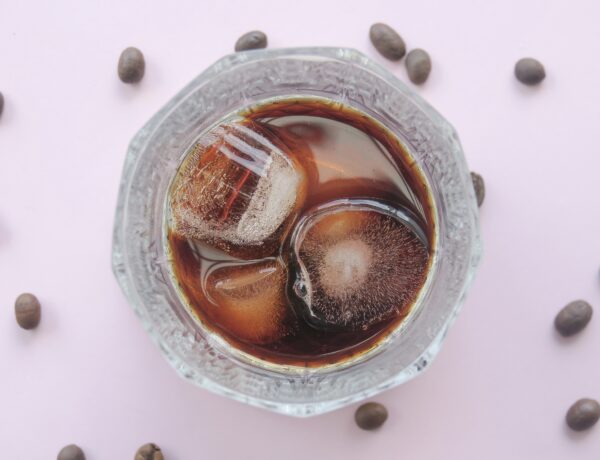
No Comments